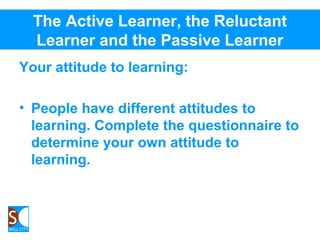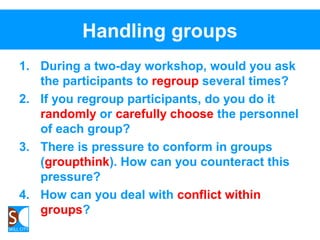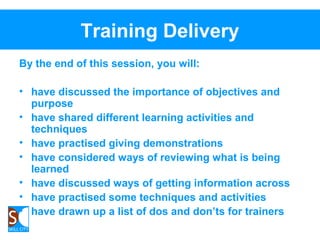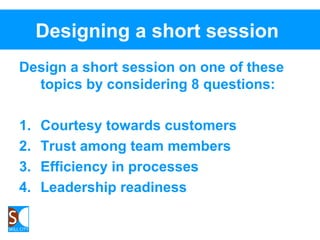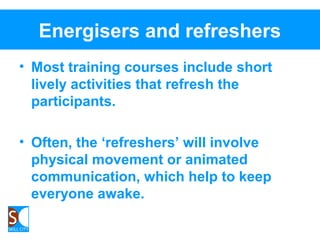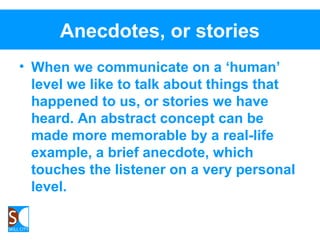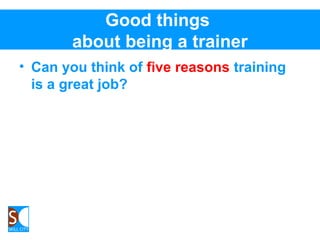The document outlines an agenda for a 3-day "Train the Trainer" workshop which will cover topics such as learning styles, training course design, training delivery techniques, and handling difficult training situations. Participants will learn how to identify training needs, design effective training sessions, and use various teaching methods and activities to engage learners. The workshop also provides opportunities for participants to practice delivering short presentations and receive feedback to improve their skills as trainers.














